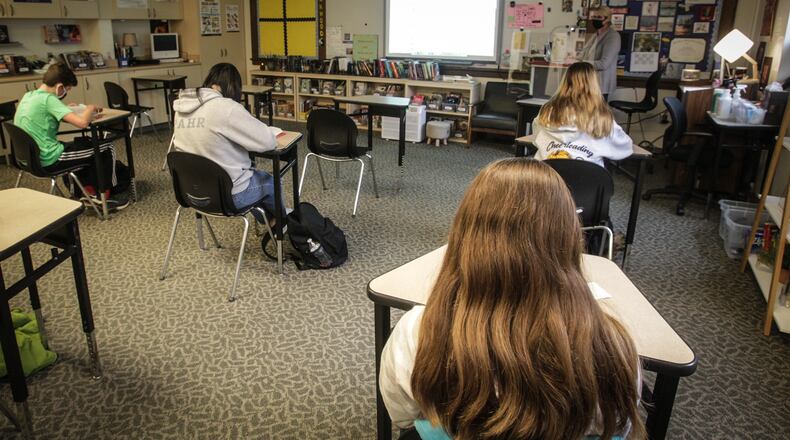The new plan would calculate local communities’ funding share on what has been called a fairer mix of income and property wealth. It calculates a “base cost” to educate an Ohio student, tied to detailed school staffing ratios, and bases other funding on calculations for busing needs, special education, technology and more.
If fully funded after a six-year phase-in, the new plan calls for a $2 billion per year increase in state funding for K-12 schools. The state currently spends about $10 billion a year for K-12 education.
“The cost is steep. We can’t hide from that fact,” said Democratic State Rep. John Patterson, who led two years of work on the bill with current Republican Speaker of the House Bob Cupp. “This is the time, this is the moment to fulfill our promise to all of Ohio’s students.”
The House passed the plan, called House Bill 305, or the Fair School Funding Plan, by a vote of 84-8.
Earlier this week, a letter circulating in the Senate suggested the actual cost of the bill might be a $3.5 billion increase per year, rather than $2 billion.
Leading Ohio school funding analyst Howard Fleeter said there are a few places where the letter makes good points, but he called the claims “wildly exaggerated,” saying rather than $1.5 billion, the difference in cost might be closer to $50 million, or 3 percent of the letter’s claims.
Longtime Senate Education Committee Chair Peggy Lehner favors the bill, calling it “a pretty darn good product … certainly light years better than what we’re currently using.”
Lehner, R-Kettering, cited two key concerns. First is what senators think of the increased cost given the stress COVID-19 has placed on Ohio’s economy. And second is the short time window to analyze such a detailed bill.
The Senate has two sessions remaining in 2020 (one each of the next two weeks), plus an “if-needed” session penciled in Dec. 22. If the bill doesn’t pass in December, the legislative process would have to start over, as those elected in November take their seats in January.
State Sen. Matt Huffman, who will take over as Senate president in 2021, said the current Senate would need to have hearings because the bill is a significant change with a significant cost increase. Huffman, R-Lima, said he has not seen the fiscal note explaining the bill, although that document is on the state legislature’s website.
“It’s hard to vote for something without a lot of knowledge (about it),” Huffman said.
Lehner said voting on this bill is simply deciding whether this is the right framework with which to fund Ohio’s schools, since the actual decision on dollar amounts will come in the 2021 budget debate.
“How we fund it or when we fund it is a secondary question, and obviously a very important one, but ‘is this the right way to do it’ is the first question we have to answer,” Lehner said. “We really should be very certain that we aren’t just dragging our feet, and we have legitimate reasons to hold this up.”
Many educators and legislators have used the word “broken” to describe Ohio’s school funding, as more than 80% of school districts don’t receive the amount of state funding that the most recent formula called for.
“Our current school funding formula has been broken for a long time,” said Rep. Gary Scherer, R-Circleville. “The Cupp-Patterson school funding formula is long overdue and will drastically improve the education of our youth for years to come.”
About the Author

